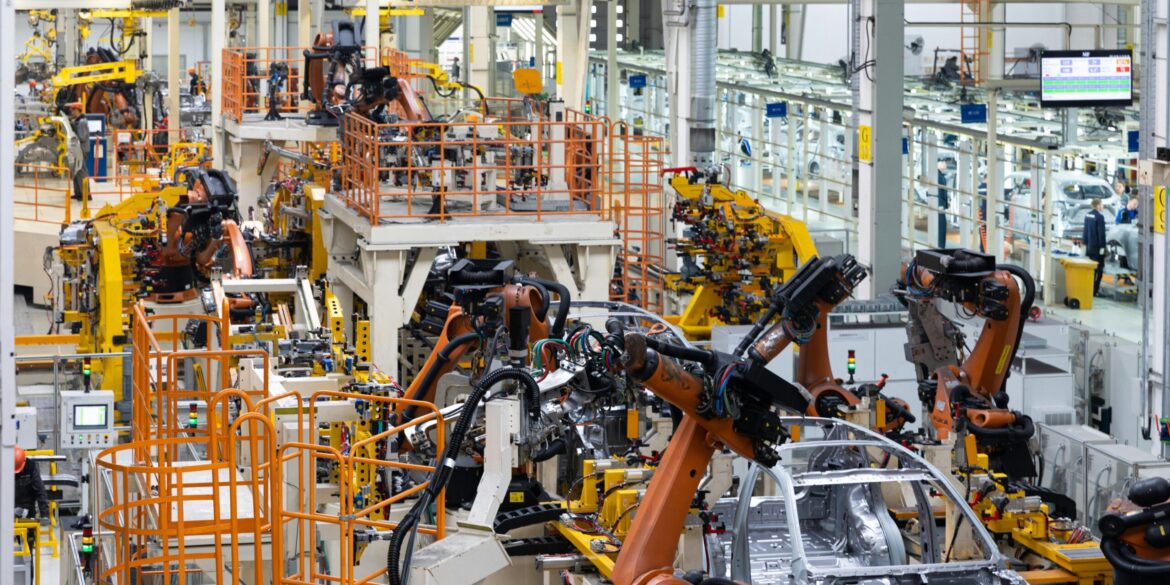New York’s manufacturing sector is undergoing a significant transformation as artificial intelligence (AI) and automation technologies become increasingly integrated into production processes. From Brooklyn’s automotive plants to upstate semiconductor facilities, businesses are leveraging these advancements to enhance productivity, reduce costs, and maintain competitiveness in a global market. These changes are reshaping how the industry operates and could have lasting implications for the state’s economy.
In Brooklyn, a prominent automotive parts manufacturer has recently adopted AI-driven robotics for tasks such as assembly and quality control. These robots, capable of operating with greater precision and speed than human workers, exemplify the shift towards automated manufacturing. The use of robotics not only speeds up production but also reduces human error, ensuring that high-quality parts are consistently delivered to consumers. Mark Heller, CEO of the company, commented, “We’re positioning ourselves to be leaders in innovation. While there are concerns about job displacement, we believe there are new opportunities for workers to adapt and thrive in this digital future.”
The integration of AI and automation is not limited to individual companies but is part of a broader trend in New York’s manufacturing industry. Statewide initiatives are underway to support this technological evolution, with a focus on workforce development and ensuring that workers are prepared for the changing landscape. Governor Kathy Hochul recently announced a $200 million investment in the One Network for Regional Advanced Manufacturing Partnerships (ON-RAMP) program. This initiative aims to bolster workforce development in advanced manufacturing across several regions in New York, including the Capital Region, Finger Lakes, and Mohawk Valley. By investing in training programs, the state hopes to ensure that its workforce can keep pace with the technological advances in automation and AI.
Additionally, the Empire AI Consortium, backed by a $275 million state investment, is set to establish a state-of-the-art artificial intelligence computing center at the University at Buffalo. This initiative seeks to position New York as a global leader in AI research and application. The consortium will bring together academia, industry, and government to advance AI technology and its practical applications, ultimately benefiting the state’s manufacturing sector by driving innovation and providing cutting-edge solutions to industrial challenges. By fostering collaboration, New York aims to establish itself as a hub for AI and robotics research, which will have a direct impact on industries such as manufacturing.
However, the rapid adoption of automation technologies raises concerns about workforce displacement. As machines take over more manual and repetitive tasks, many fear that human workers may be left behind. To address these concerns, New York is implementing policies aimed at retraining and upskilling workers. The ON-RAMP program, for example, focuses on preparing New Yorkers for jobs in advanced manufacturing, ensuring that workers are equipped with the skills necessary to thrive in the era of AI and automation. These efforts are critical in ensuring that the workforce remains competitive and adaptable in an increasingly automated world.
Experts emphasize the importance of proactive measures to mitigate the potential negative impacts of automation. Randy Wolken, President & CEO of the Manufacturers Association of Central New York, stressed that the key to success will involve working with AI and automation technologies to improve manufacturing processes while ensuring that workers are equipped with the skills needed to thrive in this new environment. “Rapid advances in Artificial Intelligence (AI) have changed the workspace and job outlook for manufacturing. The key to success will involve determining the best ways to work with the evolving promise of AI, automation, and talent development,” Wolken explained.
The state’s commitment to integrating AI and automation into manufacturing, coupled with investments in workforce development, reflects a strategic approach to economic growth. By embracing technological innovation while supporting its workforce, New York aims to maintain its competitive edge in the manufacturing sector. In the long term, this strategy could help the state become a leader in advanced manufacturing, capable of competing on a global scale while fostering a workforce that is adaptable to future technological advancements.
New York’s efforts to integrate AI and automation into its manufacturing sector show the state’s commitment to staying competitive in an ever-changing global economy. While there are challenges to overcome, including concerns about job displacement, the state’s proactive approach to workforce development positions it for long-term success. By investing in both technology and people, New York aims to ensure that its manufacturing industry remains resilient and competitive for years to come.
For more information on New York’s initiatives in AI and manufacturing, visit the official announcement from Governor Hochul’s office.

